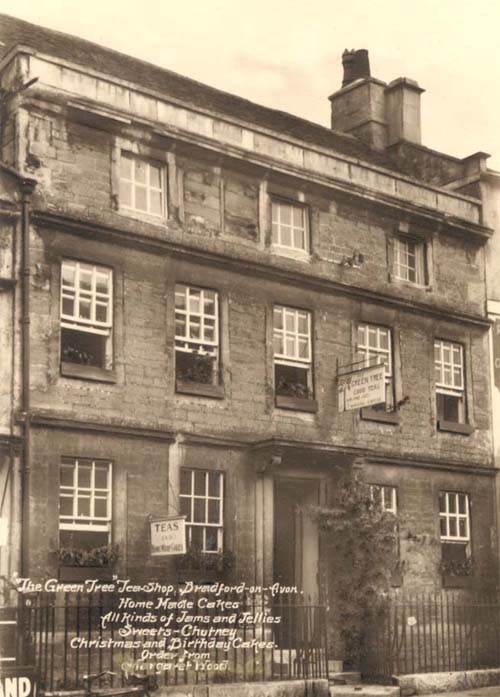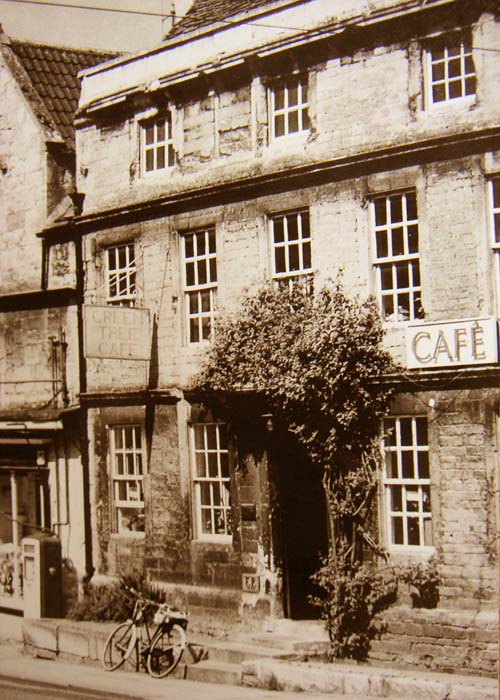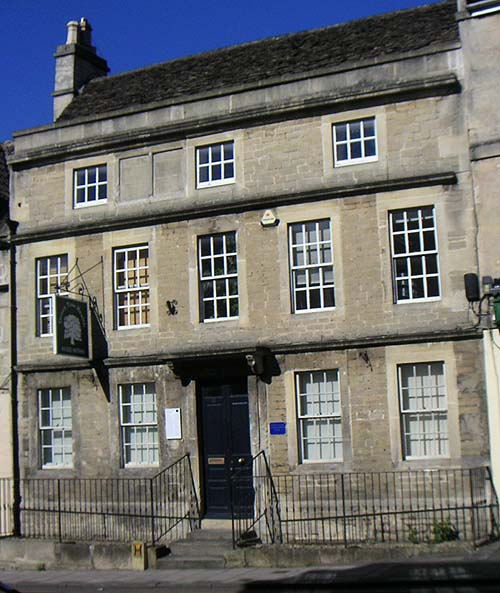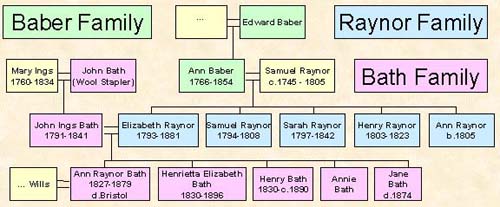GGreen
Street Health Centre, 11 St. Margarets Street
In 1784, in his eighty-first year, John Wesley on one of his many visits to the town wrote in his Diary that:“Being at Samuel Rayner’s at Bradford I was convinced of two vulgar errors: the one, that nightingales will not live in cages; the other that they only sing a month or two in the year. He has now three nightingales in cages, and they sing almost all day long, from November to August.”




The
Raynor Family
Then in 1788, the parish accounts, on the expenditure side record "By Mr.Raynor for a carper to cover the floor of the communion Table £1.9s.-.
From that year, too, there survives a Copy of Court Roll of the Bradford Prebendal Manor, recording "the surrender by Thomas Bush of Bradford, clothier, and Samuel Raynor of Bradford, gent, "of a cottage. .in Bradford ( in fact it was near Elms Cross) and various other properties whose leases had run out. A renewed lease was to be granted to Bush, and Raynor, who signed the grant on behalf of the Workhouse Trust. From 1789 to 1799, Raynor was paying an annual poor rate for Stock. This often means a clothier's stock. Raynor is not known to have been a clothier -he is always called 'gent' there is however a hint that he may have had business links with Edward Baber, his future father-in-law. He married Ann Baber in 1792 and their five children were baptised at Holy Trinity Church, Bradford even those born after they had moved up to Potticks at Frankleigh.
Over the years, Raynor had been building up a modest estate near Frankley, besides owning many houses in the town. Some of this Frankley land came from an estate which in the 1750`s had belonged to Edward Burcombe. Though Burcombe was a surveyor we cannot find the exact whereabouts of his land. His son Richard and grandson Edward later shared the land between them, and in a deed of 1778, the property which Mr William Miles settled on his wife-to-be included the two acress of pasture ground -no signs of a house there yet called Puddocks ...flat Frankley, formerly part of.. Great Ashley Farm, late in the tenure of Richard Burcombe.. father of Edward Burcombe the younger, and now sometime purchased by William Miles of Edward Burcombe". The next developments are rather confusing. According to the rate books, the Burcombes seem still to have held land rated at 3d until around 1782, but by 1787 Miles had property, 'part of Burcombe's' , rated at 4d. But according to the Land Tax records for 1773, William Miles was already paying 10s of that tax for Burcombe's that year and the tax had risen to 13s 4d by 1780. It was not unusual for the poor rate to take several years to catch up with property sales, but this is ridiculous. The above 1d increase in the Church Rate could be due to some building work but is not enough even for the front range of Potticks. Miles also had another property in the tithing, rated at l 1/4d, previously belonging to Abraham Hanny, but when in 1792 Samuel Raynor purchased 'late Burcombe's' from him, Miles kept 'late Hanny's' and his other property (e.g. the Old Bear in Bradford) for the next ten years and more.
Raynor also purchased an estate which had belonged to a Mr. Cottle. On the latter's death in 1772. the entire Cottle estate, assessed at 2s 5 1/2d for Church Rates(4d) in that year, was split in the next year. Anthony Guy of Chippenham bought land rated at 1s 8d and Thomas Baskerville of Woolley Grange the other 9d part. Then in 1776 Guy sold 1d worth of his share to Samuel Raynor. When he died in 1808 his wife Anne was to live from 1833 until her death in 1854 at her house in St. Margarets Street when her property passed to her daughter Henriettar the wife of Jonn Ings Bath of South Wraxall.
extract from R.& B.Harvey Wiltshire Buildings Record February 2000 for Potticks House.

1841
Census entry for 11 St. Margaret`s Street.